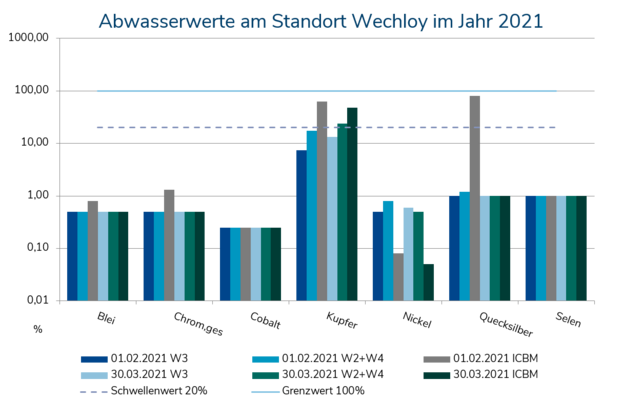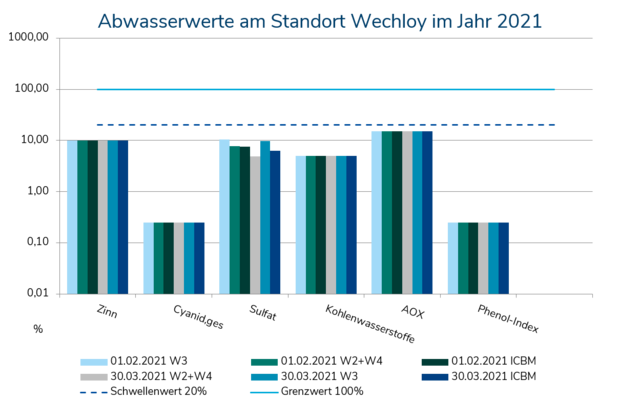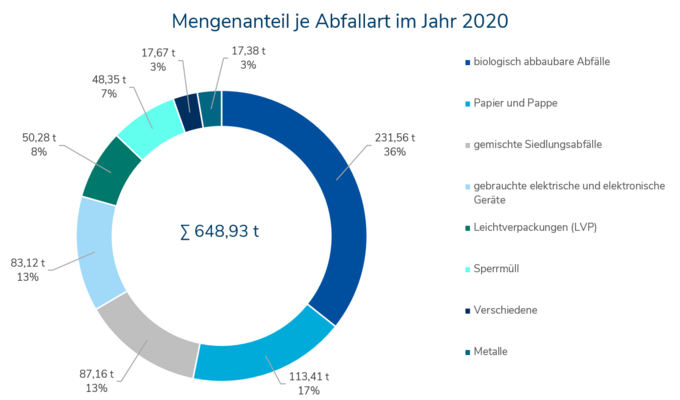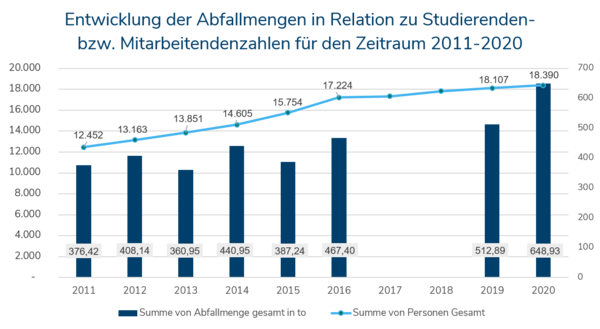Disposal management and environmental protection
Tips for correct waste separation
Waste separation is a science in itself. The administration portal therefore provides helpful tips on correct waste separation and waste avoidance.
Environmental information from A-Z
The Waste Directive and other environmental information can also be found in the Administration portal.
Disposal management and environmental protection
In addition to managing the university's waste volume of household-like commercial waste, the area of waste disposal and environmental protection also includes water and emission protection, the implementation of the Ordinance on Hazardous Substances in some areas of the department, and participation in the sustainable development of the university. The department is located within the commercial building management of Department 4.
Participation for a sustainable development of the university
A small part of the activities falls under the implementation of the COPERNICUS University Charter for Sustainable Development. For example, concepts for green roofs on university buildings were co-developed and implemented together with the Department of Land and Building Planning of Department 4 on buildings A05, A14a, the entrance area of W0, and buildings W31 and W33. Student projects are happily supported by the team as well.
Together with students of the master prgram Sustainability Economics and Management, the BallotBin project could be implemented which offers a solution to reduce the problem of cigarette butts lying around in a creative way. The project has been running since March 2019, is still active and continues to be supported by the University's Facilities Management.
As the exchange of information, knowledge and experience is important for the further development of the university in the context of sustainability, the team is involved in the working group Communication & Participation of the Sustainability Network HochNiNa of Universities in Lower Saxony as well as in the Climate-neutral university working group.
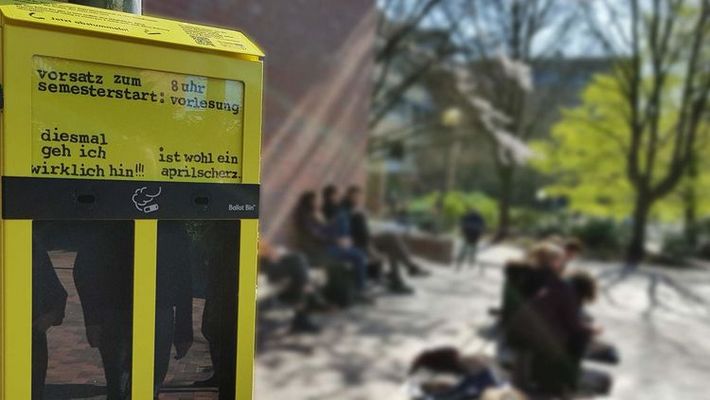
Water and emission protection
Within the framework of wastewater disposal and emission protection, the legal regulations are implemented with regard to the discharge of wastewater containing pollutants, the handling of substances hazardous to water, flammable liquids and emission loads. Particularly due to the university's research operations, strict monitoring of compliance with wastewater limits takes place using measurement procedures.
In addition to the legally prescribed controls, voluntary controls are regularly carried out with regard to substances that pollute water. Thanks to these close-meshed controls, the limits for water pollutants have been significantly undercut for years, as the wastewater values from 2021 at the Wechloy site illustrate.
In addition to this aspect, water-saving measures are initiated and implemented together with the Technical building management implemented. For example, waterless urinals have already been installed at 80 per cent of the university locations, saving at least 15,750 litres of water per day. A positive side effect of the waterless urinals is that less water-polluting cleaning agents may be used for them in order to maintain the functionality of the biodegradable barrier fluid. The most recent project is the changeover to single-lever mixers with a quick-acting valve in building W03 on the Wechloy campus and in individual cases in the Haarentor Central Library. Here, 3.2 litres of water can be saved per wash cycle, which corresponds to a reduction in fresh water consumption of 66-75%.
Waste disposal, recycling and waste prevention
As in any commercial enterprise or private household, waste is generated at the University. As a producer and holder of waste, the university has to comply with certain legal obligations arising from the Closed Substance Cycle Waste Management Act (KrWG), the Lower Saxony Waste Act (NAbfG), theCommercial Waste Ordinance (GewAbfV) and the Statutes on waste management in the city of Oldenburg the Waste Management Act.
Of particular importance for the university is that the legislation at the state level, the NAbfG, stipulates that public bodies must act as role models. According to this, "every person (...) must behave in such a way that waste is not generated unnecessarily and that environmentally sound waste management is not made unnecessarily difficult" (§ 2 NAbfG) and that public bodies "(...) must fulfil the obligation under § 2 in an exemplary manner" (§ 3 NabfG). These aspects have been taken into account in the development and implementation of the university waste concept for household-type commercial waste. Recorded in the Waste guidelines of the University this forms a basis of understanding with all members of the university for dealing with and organising waste avoidance, recycling of recyclable materials and waste disposal. In order to achieve the best possible separation of recyclable materials and to avoid waste, educational work and contact with members are also of great importance.
The staff in charge of the department are therefore happy to answer questions and suggestions, provide information and advice on waste prevention and show ways to avoid waste. Tips for correct waste separation and waste avoidance and show ways of reusing (supposed) waste.
On average, each student and employee at the University of Oldenburg generated 29 kilograms of waste per year in the period from 2011 to 2020. In recent years, the University of Oldenburg has grown considerably. Increasing numbers of students and employees lead to an increased volume of waste.
In the pandemic year 2020, for example, almost 649 tonnes of waste were generated at Oldenburg University. On the positive side, the two largest portions - biodegradable waste and paper and cardboard - are easily recyclable fractions. Nevertheless, the amount of waste is increasing disproportionately to the increase in the number of people at Oldenburg University. Thus, the total amount of waste has increased by about 72% from 2011 to 2020, while the number of students and employees has increased by about 48%.
However, there is a clear distortion of the waste data in that the enormous increase in waste quantities in 2020 is almost entirely due to a more comprehensive recording of waste flows. Taking into account this very clear distortion, the total amount of waste increased by 36% between 2011 and 2019, while the number of students and employees increased by 45%, which would indicate a disproportionately low increase in the amount of waste.
In the context of climate and environmental protection, waste avoidance, recycling of recyclable materials and waste disposal as a whole represent a visibly relevant aspect.
Implementation of the Hazardous Substances Ordinance
The obligations arising from the Hazardous Substances Ordinance in the area of building management are implemented by, among other things, conducting inspections to check the proper storage of hazardous substances and establishing operating instructions for handling hazardous substances and procedures in the disposal area. As part of the implementation of the Hazardous Substances Ordinance, hazardous substances used are checked to see whether they can be substituted by substances with a lower hazard potential. For example, the parts cleaning process in the crafts sector at the Haarentor and Wechloy sites was optimised so that a more environmentally friendly substitute substance was used.




